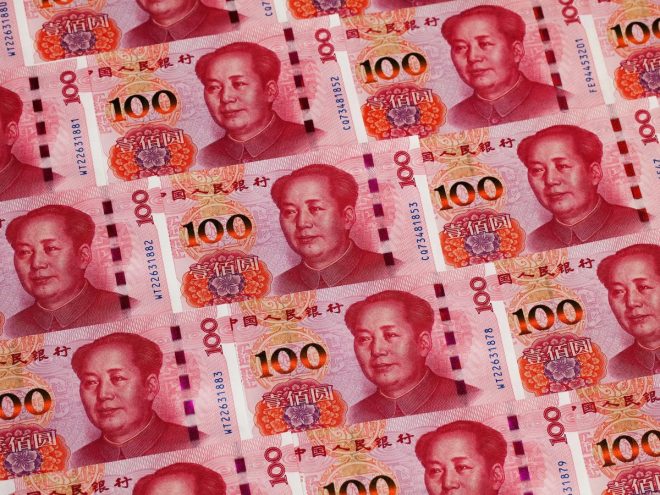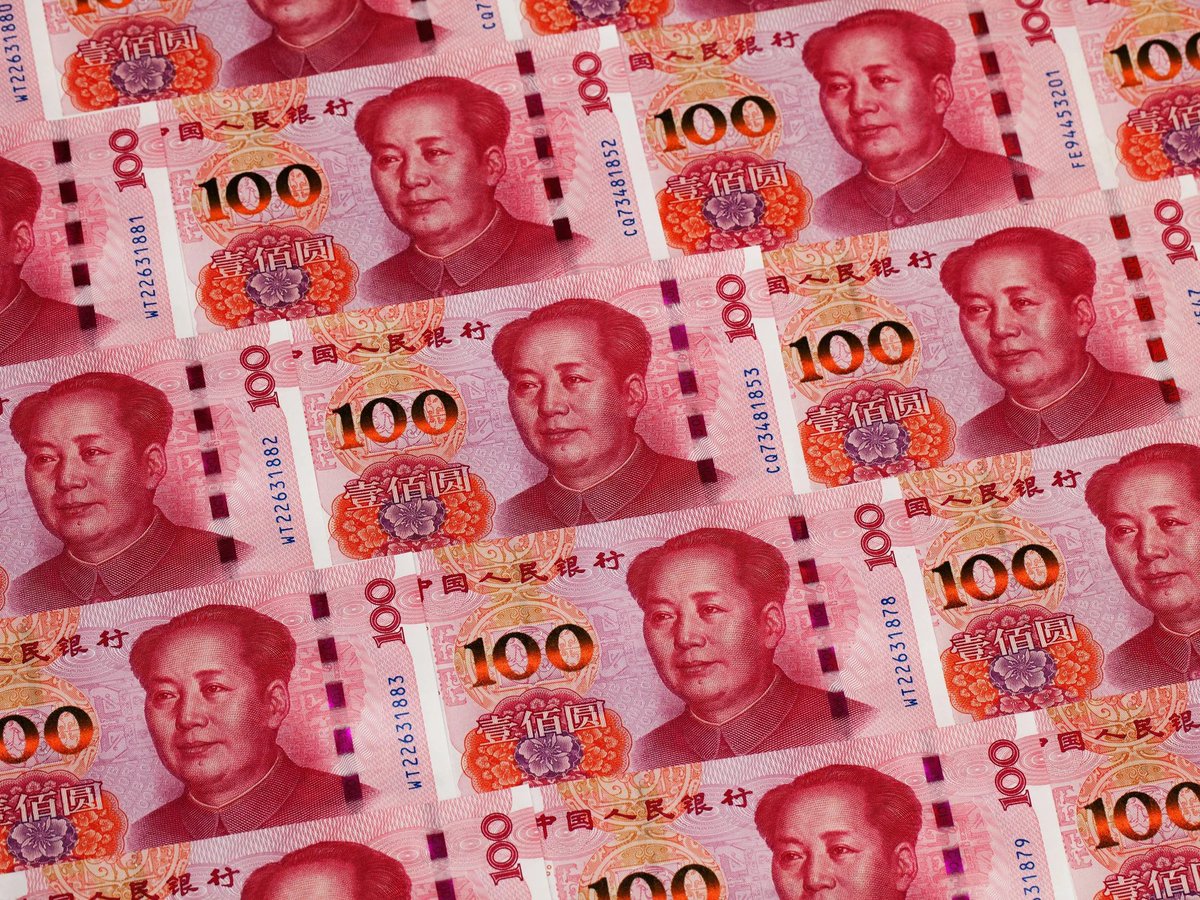
China’s Yuan Declines Against the US Dollar: Insights and Implications
In recent developments, the Chinese yuan has continued its downward trajectory, reaching its lowest level against the US dollar since September 2023. This significant decline has raised eyebrows among economists, traders, and policymakers alike, reflecting broader economic trends and geopolitical tensions. Understanding the implications of this currency depreciation is crucial for various stakeholders, including investors, businesses, and governments.
Current state of the Yuan
As reported by BRICS news on April 8, 2025, the yuan’s fall against the dollar marks a notable milestone in currency valuation. The depreciation of the yuan can be attributed to several factors, including shifts in economic policy, market sentiment, and external pressures. The yuan’s performance is a key indicator of China’s economic health and its relationship with global markets.
Factors Contributing to the Decline
- Economic Slowdown in China: China has experienced a slowdown in economic growth, influenced by various internal and external factors. The ongoing challenges of the real estate market, fluctuations in consumer spending, and regulatory changes have all contributed to a less favorable economic outlook. As a result, investor confidence may wane, leading to decreased demand for the yuan.
- US Monetary Policy: The Federal Reserve’s monetary policy plays a crucial role in the strength of the US dollar. With the Fed’s recent interest rate hikes aimed at combating inflation, the dollar has gained strength relative to other currencies, including the yuan. Higher interest rates in the US attract foreign investment, putting downward pressure on the yuan.
- Geopolitical Tensions: The ongoing trade tensions between the US and China, along with other geopolitical factors, have created an uncertain environment for investors. Concerns about tariffs, trade agreements, and diplomatic relations can lead to fluctuations in currency value, further exacerbating the yuan’s decline.
- Market Sentiment: Currency values are often influenced by market sentiment and speculation. Traders’ perceptions of economic stability and growth prospects in China can lead to increased selling of the yuan, contributing to its devaluation. Negative news reports or forecasts regarding China’s economy can quickly shift market sentiment, prompting traders to adjust their positions.
Implications for Global Markets
The depreciation of the yuan has significant implications for global markets and trade dynamics. As the yuan weakens, several key consequences arise:
- YOU MAY ALSO LIKE TO WATCH THIS TRENDING STORY ON YOUTUBE. Waverly Hills Hospital's Horror Story: The Most Haunted Room 502
- Impact on Exports and Imports: A weaker yuan makes Chinese exports cheaper for foreign buyers, potentially boosting demand for Chinese goods. However, it also increases the cost of imports for China, which could lead to inflationary pressures. The balance between exports and imports is crucial for China’s trade surplus and overall economic stability.
- Influence on Commodity Prices: As one of the largest consumers of commodities, changes in China’s currency value can impact global commodity prices. A declining yuan may lead to increased demand for commodities priced in dollars, affecting markets for oil, metals, and agricultural products.
- Investor Behavior: Currency fluctuations can influence investment strategies. Investors may seek to adjust their portfolios in response to the yuan’s decline, potentially reallocating assets to hedge against currency risk. This could result in increased volatility in global financial markets as investors react to changing currency dynamics.
- Regional Economic Effects: Neighboring economies in Asia may also feel the effects of a declining yuan. Countries with strong trade ties to China may experience shifts in demand for their exports, impacting their economic growth. Additionally, currency fluctuations can create competitive advantages or disadvantages for regional economies, influencing trade relationships.
Future Outlook
The future trajectory of the yuan remains uncertain, with several factors at play. Analysts will closely monitor China’s economic policies, global economic trends, and geopolitical developments that could influence currency movements. Potential interventions by the Chinese government to stabilize the yuan could also play a role in its future valuation.
- Policy Responses: The Chinese government may implement measures to support the yuan, such as adjusting interest rates or intervening directly in currency markets. These actions could help restore confidence among investors and stabilize the currency.
- Global Economic Conditions: The broader global economic landscape will also impact the yuan’s value. As economies recover from the disruptions caused by the COVID-19 pandemic, shifts in demand and supply dynamics will influence currency valuations.
- Long-term Economic Reforms: China’s approach to economic reforms and its commitment to transitioning to a more consumption-driven economy will ultimately shape the yuan’s long-term prospects. Structural changes aimed at improving productivity and fostering innovation could bolster investor confidence and support the currency’s value.
Conclusion
In conclusion, the recent decline of the Chinese yuan against the US dollar has significant implications for both the Chinese economy and global markets. The interplay of economic factors, geopolitical tensions, and market sentiment will continue to shape the yuan’s trajectory in the coming months. Stakeholders, including investors, policymakers, and businesses, must remain vigilant and adaptable in response to these evolving dynamics. As the situation develops, ongoing analysis and insights will be crucial for understanding the broader economic landscape and the yuan’s role within it.

JUST IN: China’s yuan continues to fall, reaching its lowest level against the US dollar since September 2023. pic.twitter.com/5hKYQyEDP8
— BRICS News (@BRICSinfo) April 8, 2025
JUST IN: China’s yuan continues to fall, reaching its lowest level against the US dollar since September 2023.
The financial world is buzzing as news breaks about China’s yuan experiencing a significant decline against the US dollar, hitting its lowest point since September 2023. This development is crucial not just for investors and traders but also for anyone interested in global economics and the shifting dynamics between major currencies.
Understanding the Yuan’s Decline
So, what exactly does it mean for the yuan to be falling? Essentially, a weaker yuan means that it takes more of China’s currency to buy one US dollar. This trend can be alarming for various reasons, including potential impacts on trade, inflation, and the overall economy. In this article, we will delve deeper into the reasons behind this decline, its implications, and what this could mean for the future of both China’s economy and the global market.
Reasons Behind the Yuan’s Fall
There are several factors contributing to the yuan’s drop against the dollar. One major reason is the ongoing economic challenges that China has been facing, including slowing growth rates and regulatory crackdowns on various sectors, particularly technology and real estate. These challenges have led to decreased investor confidence, prompting many to withdraw their investments from China, which in turn puts pressure on the yuan.
Additionally, the Federal Reserve’s recent decisions regarding interest rates have played a significant role. As the US raises interest rates, the dollar becomes more attractive to investors seeking better returns. This shift can lead to a stronger dollar and a weaker yuan, further exacerbating the situation for China’s currency.
Implications for Trade and Investment
A falling yuan can have profound implications for trade. For one, it makes Chinese exports cheaper for foreign buyers, which can help stimulate demand for goods produced in China. On the flip side, it increases the cost of imports for Chinese consumers and businesses, leading to potentially higher inflation rates within the country.
For investors, a weaker yuan can raise concerns about the stability of their investments in China. When the value of a currency drops, it can erode the returns that foreign investors expect when they convert their earnings back into their home currency. This risk can deter foreign investment, which is crucial for China’s economic growth.
The Global Economic Landscape
The decline of the yuan is not just a localized issue; it has ripple effects that extend to the global economy. As one of the largest economies in the world, China’s financial health is interconnected with many other countries. For instance, if the yuan continues to fall, it could lead to a re-evaluation of trade relationships, as countries may seek to protect their own currencies and economies from the impacts of a weakening yuan.
Moreover, this situation could lead to increased tensions between the US and China, especially regarding trade policies. The US has long accused China of manipulating its currency to gain a competitive edge in global markets. A falling yuan might reignite these accusations and lead to further tariffs or trade restrictions.
The Future of the Yuan
So, what does the future hold for the yuan? It’s hard to say definitively, but many analysts believe that the Chinese government may take steps to stabilize the currency. This could involve interventions in the foreign exchange market or adjustments in monetary policy to support the yuan.
China has a history of managing its currency to control economic outcomes, and it may be tempted to do so again in response to this latest downturn. However, any such measures could come with their own set of challenges, including potential backlash from the international community.
Keeping an Eye on Economic Indicators
For those interested in the ongoing developments regarding China’s yuan and its economic implications, it’s essential to stay informed about key economic indicators. This includes monitoring China’s GDP growth, inflation rates, and trade balances, as well as the Federal Reserve’s interest rate policies.
Understanding these factors can provide valuable insight into how the yuan might perform in the future and how it could impact the global economy.
Conclusion
In summary, the recent decline of China’s yuan against the US dollar is a significant development in the world of finance. With potential implications for trade, investment, and international relations, this situation is one that deserves close attention. As we continue to monitor the situation, staying informed about the various economic indicators and trends will be crucial for understanding what lies ahead for China’s economy and its currency.
As the market reacts and adapts to these changes, it will be interesting to see how both China and the US navigate this evolving landscape. The yuan’s performance will undoubtedly be a topic of discussion among economists, investors, and policymakers alike in the months to come.
Breaking News, Cause of death, Obituary, Today
